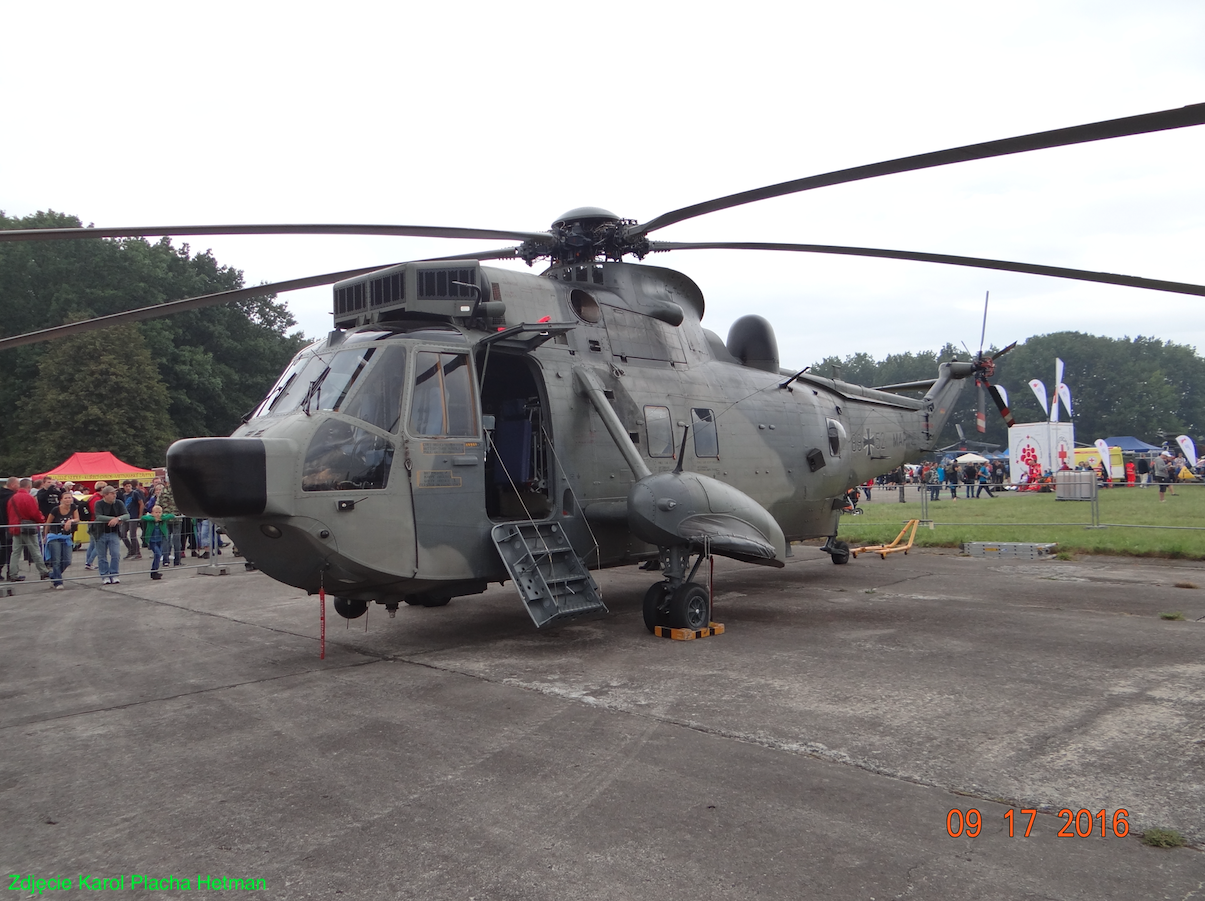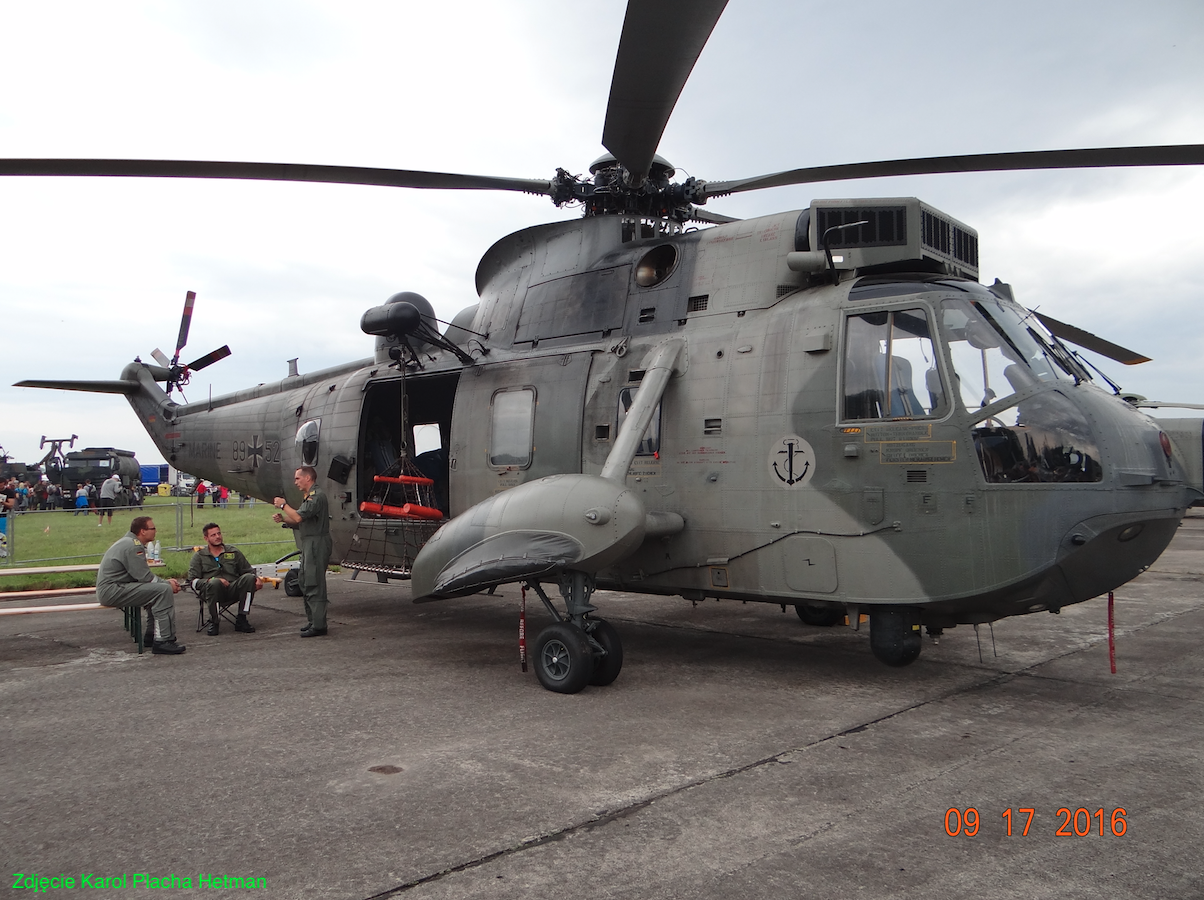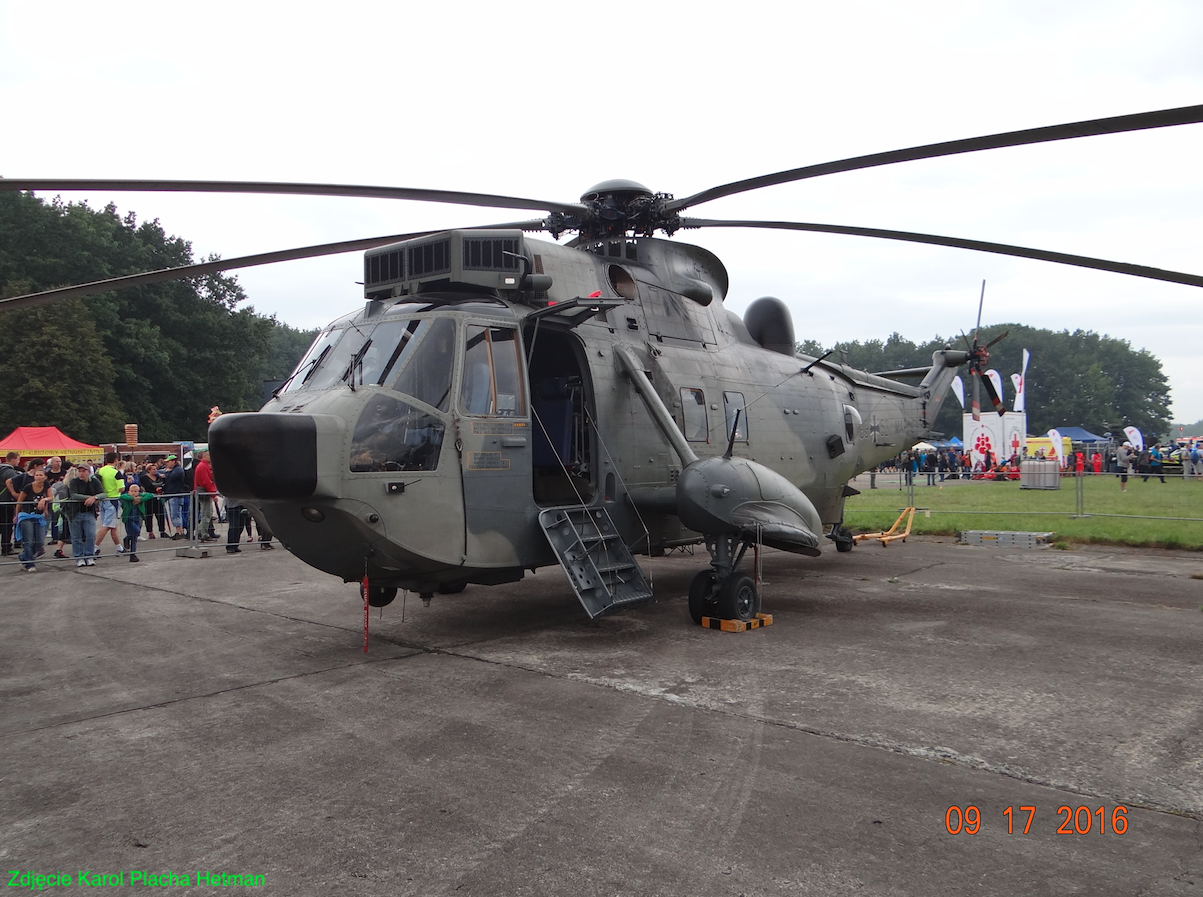Warszawa 2023-04-03
British Westland Sea King helicopter.
The Westland WS-61 Sea King helicopter is a British licensed version of the American Sikorsky S-61 helicopter of the same name. The Westland WS-61 Sea King was built by Westland Helicopters. The helicopter is significantly different from the American version. It has Rolls-Royce Gnome engines (derived from the American General Electric T58 engine) fitted. The helicopter has a British anti-submarine system and a fully computerized flight control system.



The Sea King was designed primarily to perform anti-submarine warfare (ASW) missions. A variant of the Sea King known as the Commando was developed by Westland and was used for troop transport. In British service, the Westland Sea King provided a wide range of services with both the Royal NAVY and the Royal Air Force. Helicopters were used in the Falklands-Malvinas War, the Gulf War, the Bosnian War, the Iraq War and the Afghanistan War. The Sea King helicopter is best known as the Royal Navy's Search and Rescue Machine (red and gray livery) and the RAF Search and Rescue Force helicopter (yellow livery). Sea King has also been adapted to meet the requirements of the Royal Navy for an airborne early warning platform.
On 26 September 2018, the last remaining Sea King variant in Royal Navy service ended its service. Most operators have replaced or plan to replace Sea King helicopters with more modern helicopters such as the NHIndustries NH90 and AgustaWestland AW101.
Development of the Westland WS-61 Sea King design.
Westland Helicopters, which had a multi-year licensing agreement with Sikorsky Aircraft authorizing the construction of Sikorsky helicopters, extended this agreement to the Sikorsky SH-3 Sea King design shortly after the Sea King first flew in the US in 1969. The US provided the plans, and Westland set about developing a helicopter that would be based on British components. Rolls-Royce Gnome engines, aggregates, avionics and the entire flight control system were of key importance. British operational requirements were also significant. British Sea Kings operate from ground airports, while American Sea Kings use primarily aircraft carriers. This resulted in a different crew arrangement, with tasks controlled by the observer rather than the pilot, and the fitting of a search radar.
The British Sea King replaced the Westland Wessex helicopters. The Sea King made its first flight on May 7, 1969. The first two helicopters were used for testing. Four helicopters built in the USA were used in the tests. In August 1969, the helicopters were put into trial operation. The final variant of the helicopter was introduced into service in 1979.
The British Sea King takes 28 armed soldiers into the hold. The helicopter is capable of launching. In the 1970s, Westland equipped the built Sea Kings with new composite rotors. Production was completed in 1995. Westland produced a total of 344 Sea Kings. Most Sea King helicopters were in service until 2016. The British retired Sea King helicopters from service in 2018.
The powerplant consists of two Rolls-Royce H.1400-2 Gnome turbine engines, 2 x 1,660 shp (2 x 1,240 kW). The helicopter is armed with 4 Mark 44, Mark 46 or Sting Ray torpedoes or 4 depth charges. Machine gun positions are mounted in the door. Different types of machine calibers can be installed.
WS-61 Sea King helicopter data:
Crew 2-4. Length 55 feet 10 inches (17.02 m). Height 16 feet 10 inches (5.13 m). Curb weight 14,051 lb (6,373 kg). Gross weight 21,000 lb (9,525 kg). Max takeoff weight 21,400 lb (9,707 kg). Main rotor area 3,020 square feet (281 m2). Cruise speed 112 knots (129 mph, 207 km/h) Range 664 nautical miles (764 miles, 1,230 km). Climb rate 2020 ft/min (10.3 m/s).
Written by Karol Placha Hetman
